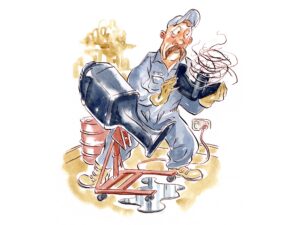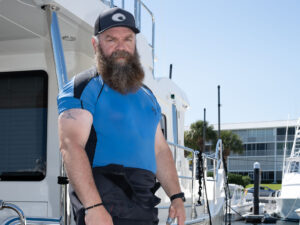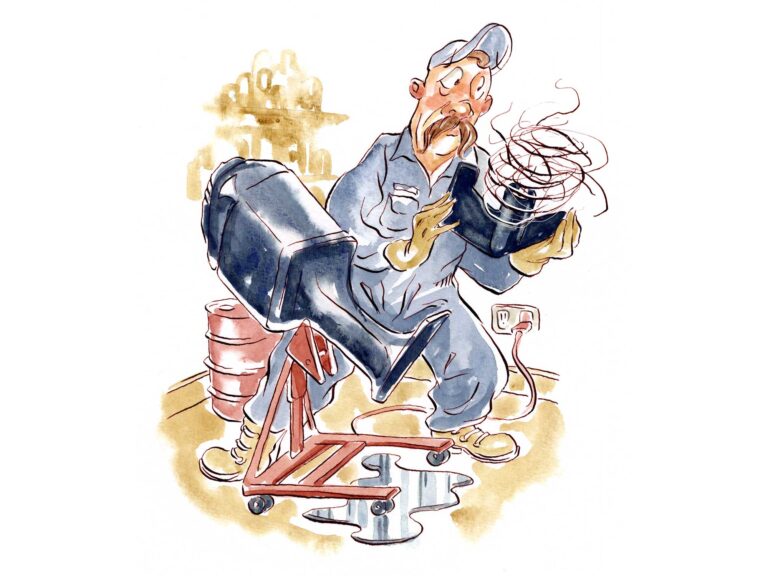A good riding boat can make up for deficiencies elsewhere on the vessel — and a harsh riding one can make even the most luxe boat feel like a dump truck. Try getting your crew to smile when they’re getting bounced off plush, French-stitched upholstered seats or wearing a beverage that splashed out of a can that had been snugly secured in a drinkholder. Women can be particularly difficult to make happy when the ride is rough due to the action imparted on their upper torsos. We skippers forget that. Not only do we have the wheel to hold on to, but we also usually stand while underway, which allows our legs to serve as shock absorbers.
A good captain is attentive to his crew’s comfort and the number one way you can soften the ride is simply to slow down. There are other, easily remembered techniques that can minimize the slamming and banging — depending upon your boat, your experience, and the prevailing conditions — without resorting to trawler speed. Here are five that work for me.
The A List. When headed out in winter winds in my flat-bottomed duck boat, I sometimes move gear on deck to induce a list. Why? This allows the jonboat to present the sharp corner of its chine to the chop. In certain conditions, the same technique can be used aboard cruisers that have hulls with moderate deadrise. Use trim tabs or shift gear to get your boat to lay over — but only within the limits of conditions and your experience.
Level Headed. The opposite of creating a list can also work. If your boat is listing and landing on the flat panel of the hull instead of on its V-shaped centerline, the quality of the ride suffers. The solution is similar to that described above — use trim tabs or shift crew and gear to keep an even keel.
Work the Obliques. When running into closely spaced swells, hit the waves at a slight angle. This keeps more of the hull on the crest for a longer period, which helps keep the bow from hanging over the wave, then dropping the entire boat into a hole. You can do this for each wave, if the spacing (wave period) and your speed allow. If not, set a zigzag course to your waypoint.
A Dry Run. Getting wet can be as unpleasant as getting knocked around. If you apply negative trim to tabs and drives, the bow will drop, which cuts waves more smoothly. Of course, because you’re now breaking water farther forward, the chances of a soaking have increased. Fiddle with the trim and speed to find a happy medium.
Soft Pedal. To maintain the highest average speed with the least pounding in a head sea, back off the throttle as you crest the wave. This allows the boat to slip rather than fall into the trough. Now get right back on the levers and power up the next wave. Yes, this is tiring for the skipper, as it forces you to “drive every wave.” But if you’re trying to make a tournament weigh-in, win a poker run, beat a storm, or outrun fog or darkness, it might be your best option.
Use any or all of these techniques the next time your course takes you into the teeth of a stiff chop. They should help you get to your destination not only faster, but also with more comfort.








